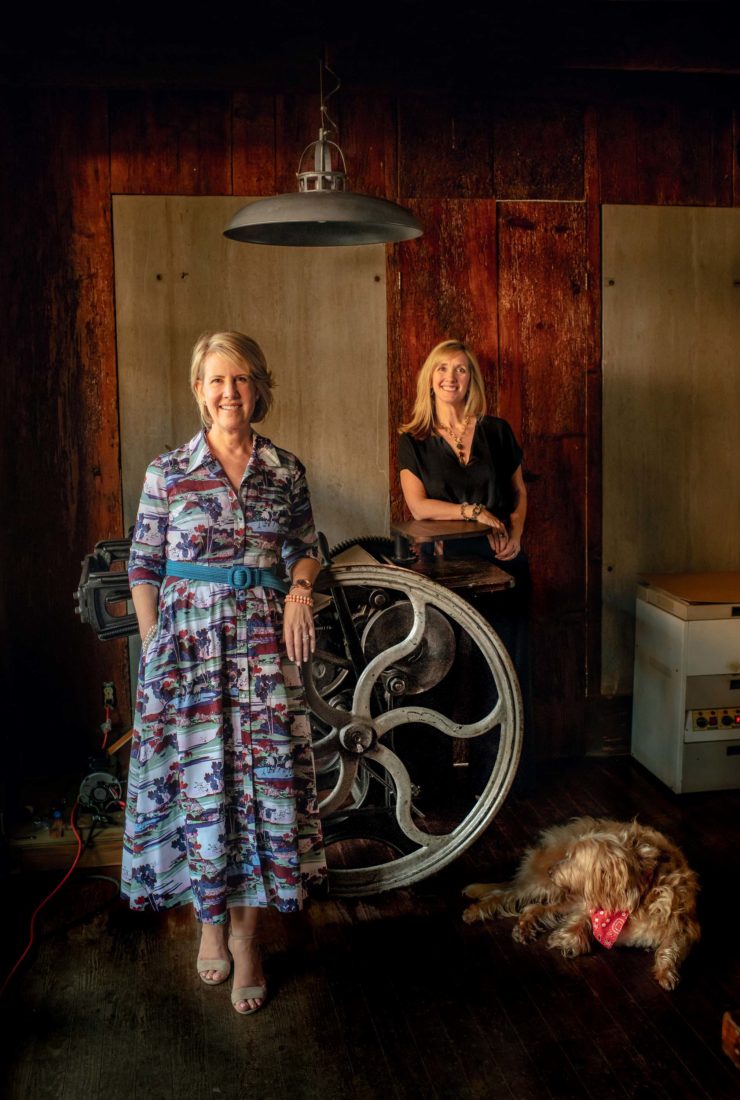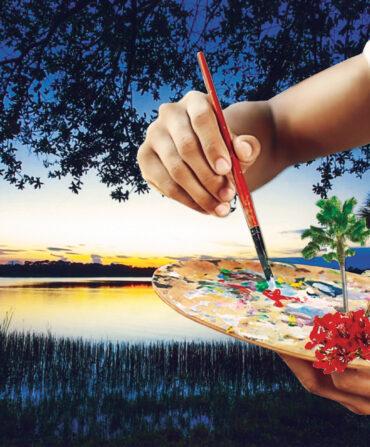It’s fitting that one of the owners of Scriptura—a New Orleans letterpress studio filled with antique presses and a huge array of stunning custom and ready-to-mail stationery and invitations—claims to have the best thank-you note story ever.
“There’s always a dog or two in our shop—three if no one’s looking,” says Margaret Jones, who opened Scriptura with her sister, Sallie Mykris, in 1995. One of those shop dogs is Rupert, a mixed breed Jones adopted from the Louisiana SPCA. She became so enamored with the four-legged family member that she created a formal birth announcement at Scriptura with a photo of Rupert to mail to friends. The shelter received one, too, along with a heartfelt handwritten thank-you note on Jones’s personal stationery designed by her and her team.
“They saw sucker written all over that note,” she says. “They called me and were like, ‘Hey, do you know Rupert has a sibling here?’ I fell in love, and that’s our other pup, Hilda. See, the power of paper!”
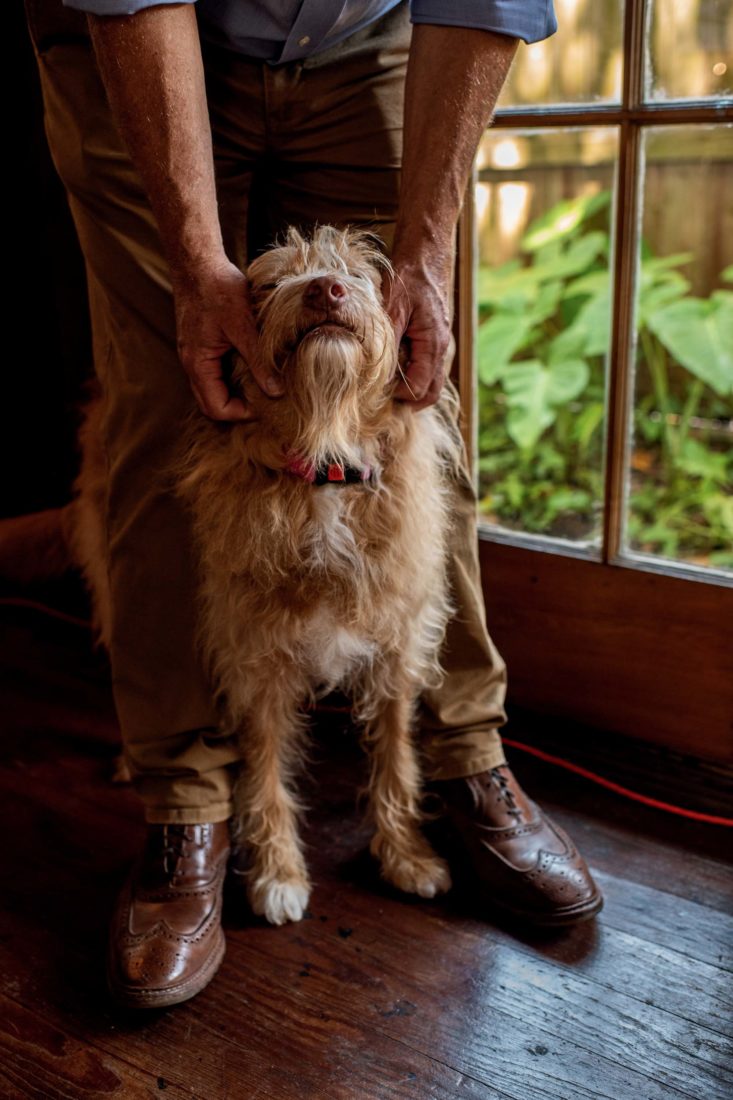
Photo: Denny culbert
Hilda, the other shop dog.
The sisters’ passion for print started when they were young. “Back in the day you would pass the time by reading a book or getting a sketchbook and drawing your surroundings, or letter writing,” says Jones, who grew up in Dallas. “Our extended family was in South Carolina and Mobile, so it was how we kept in touch. It was a way to foster connectivity.”
When they decided to open their own shop after college, Jones and Mykris traveled to Italy for inspiration. There, the glass pens, feather quills, extravagant Florentine envelope liners, soft torn-edge papers, and exquisite journals enthralled them. “Sallie and I both felt fascinated by the offerings of European paperies,” says Jones, who describes the Scriptura shop on Magazine Street, with its salvaged cypress walls and doors, as an old-world library—a place to linger. “We saw a real relationship between these older European cities and New Orleans. It just seemed a natural fit to bring some of those products home and, eventually, start producing our own.”
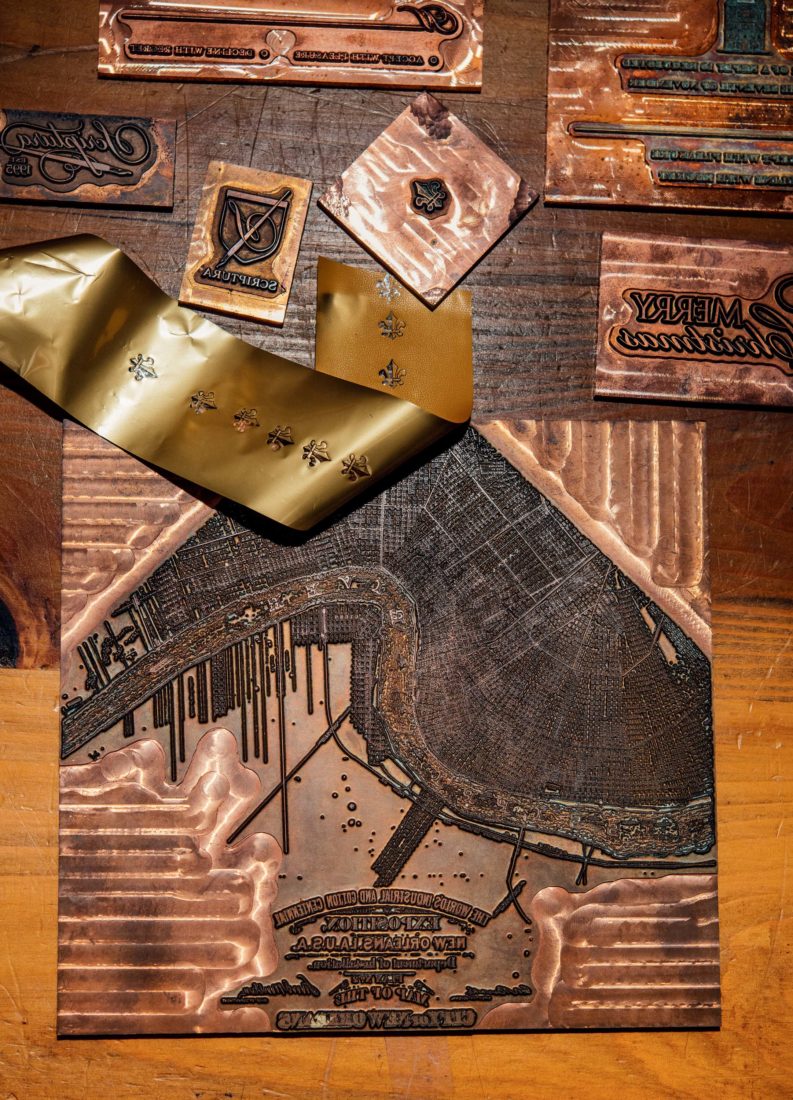
Photo: Denny Culbert
Copper plates used on the Heidelberg Windmill press.
They didn’t start adding their own boxed and ready-to-mail goods to their custom work until after Hurricane Katrina. When they returned to New Orleans, at the end of September 2005, “all we could think about was how joyful we were to be home.” So joyful, in fact, that they created a line of holiday cards that celebrated the food, music, architecture, and traditions of their adopted hometown, which led them to expand Scriptura’s retail offerings.

Photo: Denny culbert
Scriptura’s retail shop fronts the letterpress
studio.
When a client comes to Jones and Mykris to create custom stationery, or an invitation—be it for a birthday party, a wedding, a debutante party, or an opening—the process is intricate. “When we are looking at events like Carnival balls, we’re talking about traditions that date back to the 1800s, so we stick to a very old-world feel—we need it to have a connection to the past,” Jones says. “Other times we’re working with architects or brides who want a more contemporary flavor. We’re lucky to have some designers on our team with a very romantic hand and others with a more modern look; some can do more lifelike renderings of people or plants or flora and fauna, while others can do beautiful architectural renderings.”
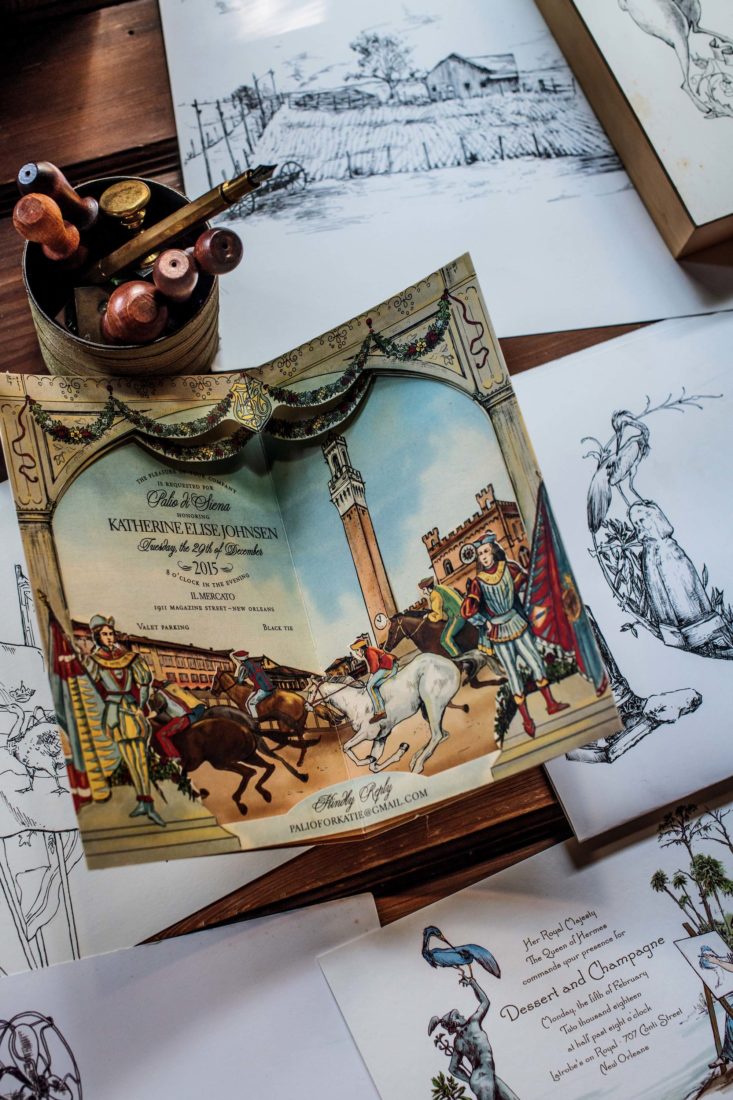
Photo: Denny culbert
Colored and metallic inks in use.
Six designers hand draw all of the custom illustrations, and then two full-time printers operate the five antique letterpresses. The sisters found some of the two-thousand-pound machines in geeky printer chat rooms.
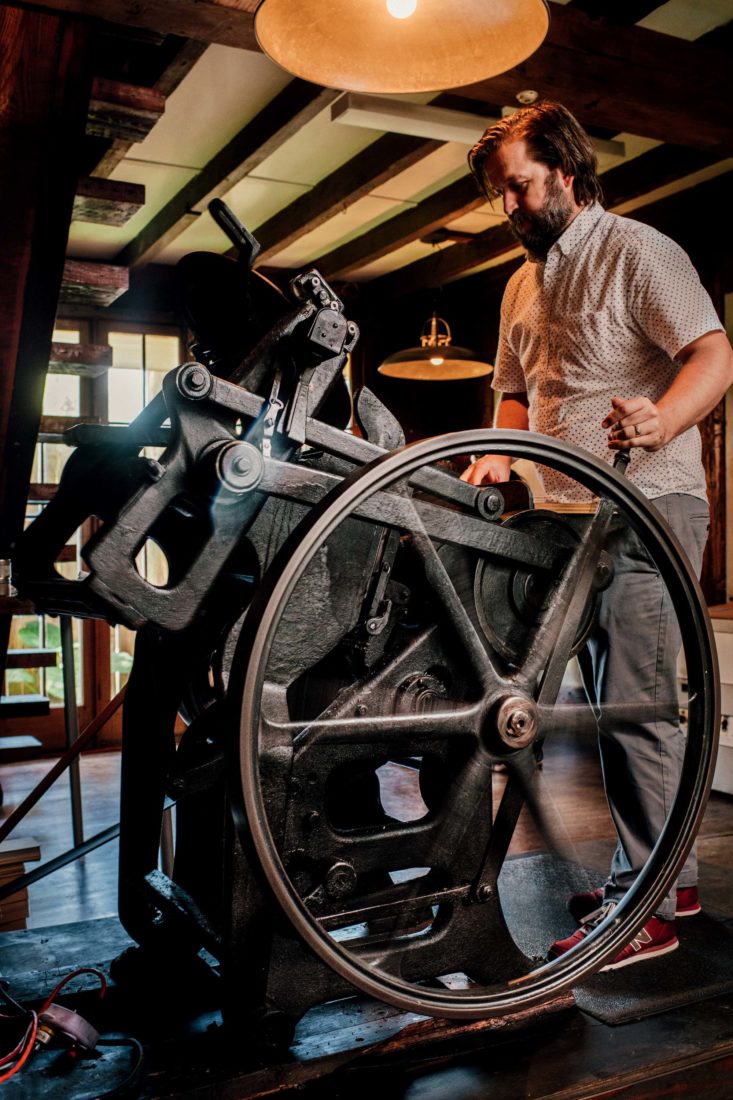
Photo: Denny Culbert
Studio head Peter Anderson runs a job through a 1915 Chandler & Price platen press.
“Each machine has its own different temperament, so we choose their jobs carefully,” Jones says. “We have one press, an original Heidelberg that was made in Germany in 1942, that we use for printing our foil jobs. And two others from the early 1900s that we use for ink jobs.” To work with the antique equipment, they copy the illustrations into digital files, which are then converted to film used to create a custom plate for the printing. Every piece is then hand fed into the machines to ensure accuracy and quality control. A small job can be printed in a week, while larger runs can take six months for the design process alone.

Photo: Denny culbert
An original sketch.
The result isn’t your typical piece of mail. “The eye takes in the design, engaging with the visuals, noticing color and depth, while the hand feels the weight and texture of the paper,” Jones says. “Anticipation is the highest form of enjoyment.” And it’s hard not to anticipate, say, a Versailles-themed debutante ball when the invitation features an original drawing of an elaborate crest, flanked by leaping stags and laurel leaves. The custom deckle-edged paper is stained with coffee to echo the vintage typography, and a monogram stamped in wax honoring three generations of the family seals the deal.
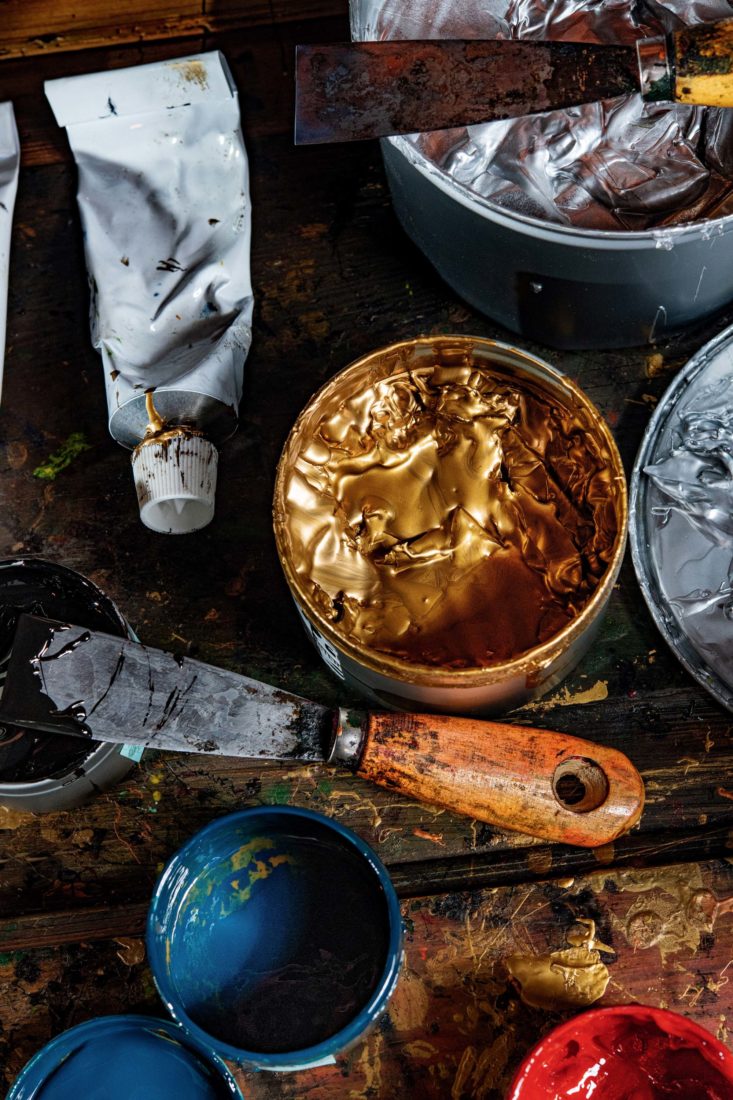
Photo: Denny culbert
Custom work.
“People really appreciate sending a piece of mail and getting one in return,” Jones says. “They want to express their personality, and you really can’t do that through email. A box of stationery can be such an indicator of who you are—from the colors to the designs to the fonts. It’s a very personal representation of one’s self.”


